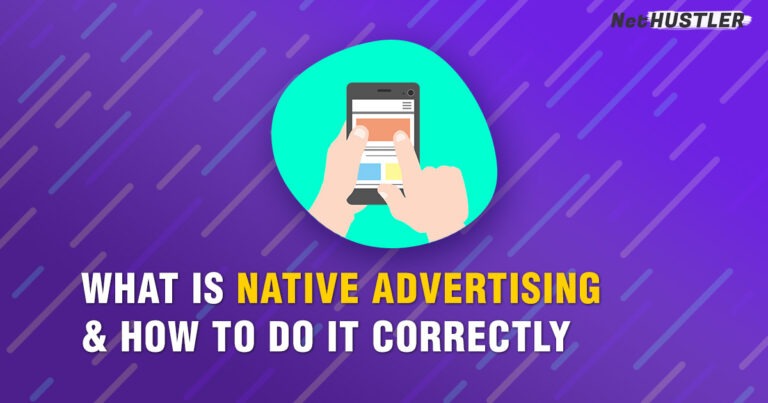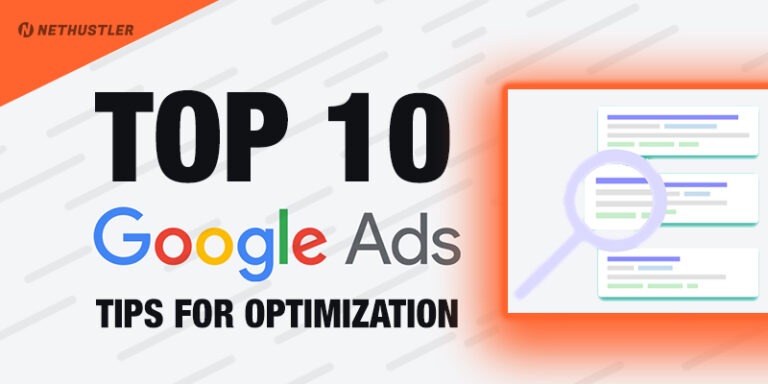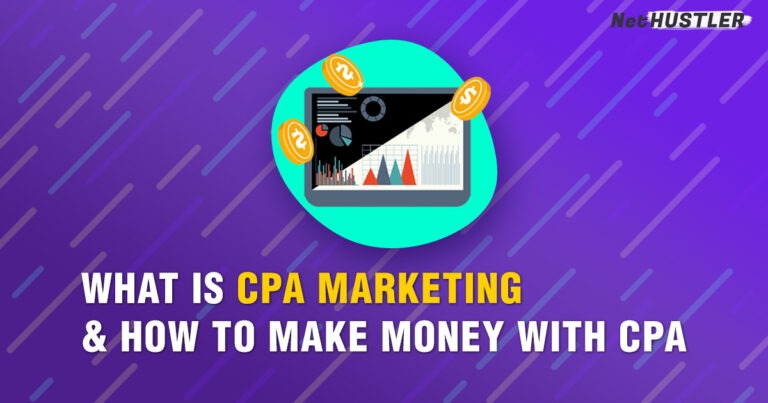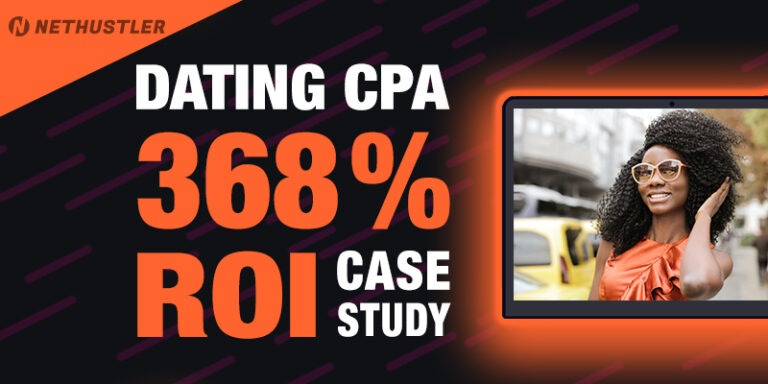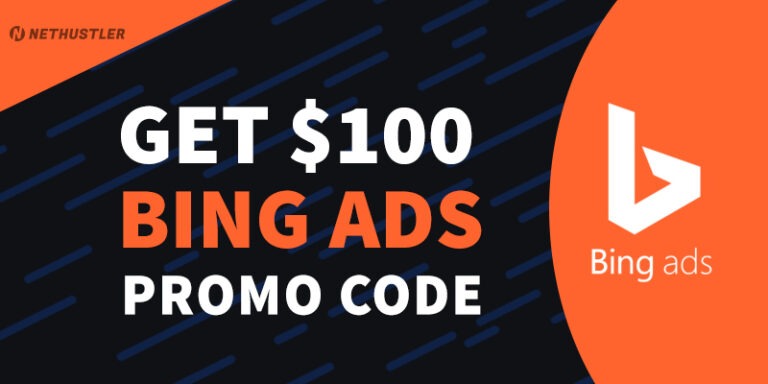Difference Between CPC, CPM, CPL, CPA, CPI – Marketing Pricing Models
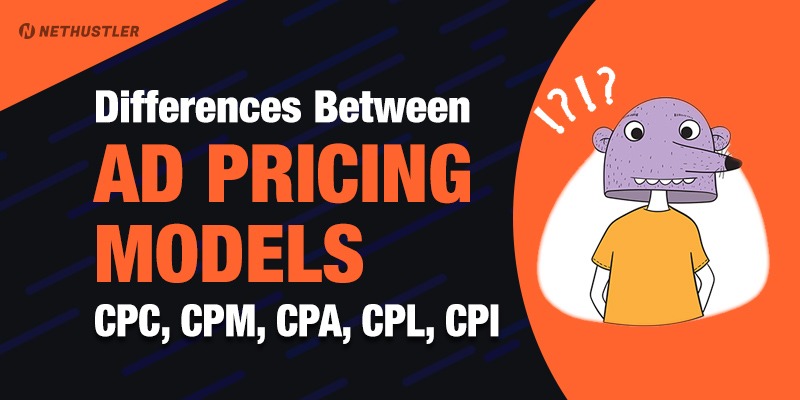
Did you just start your affiliate marketing career and got confused with some of these abbreviations for performance marketing and ad pricing models?
Like, what the heck is: CPC, CPM, CPV, vCPM, CPL, CPA, CPS, CPI, CPE, RevShare, ROI, CR, CTR…
?????????????????

I feel you, listen, when I first started out I was so fucking lost that I had to google every single one of those terms individually to learn what they meant…
And guess what?
I would forget about it the next day when I had to re-Google again (is that even a word…re-Google?)
Anyway, needless to say, it was a long and excruciating process, part because I was maybe an idiot who couldn’t remember things properly and part because well… the affiliate marketing and online marketing world as a whole have a ton of confusing names, especially if you’re a newcomer.
I’ve decided to create this longer article and explain all the stupid performance marketing pricing model terms in more detail so that you can have all the definitions on just one page.
Bookmark this shit, and visit this page every time you’re lost.
Don’t worry I’ll probably get lost too in the future when I’m getting senile and forgetting a lot of this stuff… so I guess I’m going to have to bookmark it too…
Anyway… back to the pricing models.
Ad Pricing Models – Definitions
CPC – Cost Per Click
CPC stands for Cost Per Click, meaning that if you create a campaign in an ad network that has the CPC pricing model, you will pay for each click received on your ad from users.
This is probably the easiest and most safe ad pricing model that you can choose when deciding to pay for traffic, however oftentimes it’s also the most expensive.
Since you’re paying for clicks to get (preferably) high-intent targeted traffic, which has a much higher conversion rate, then the costs associated with this are also higher.
That’s why search engine CPC costs are on average $1.
Oh, I forgot:
PPC which stands for Pay Per Click is the same thing as CPC, there is no difference between them, other than the name.
Weird I know.
No, seriously, go and get those while they’re still hot and available.
Moving on:
CPM – Cost Per Mille
Some funky Latin word (Mille) was thrown around inside this one, just because. Mille is latin for a thousand or 1,000. So CPM stands for Cost Per Mille or Cost per 1,000 views / impressions.
The most popular ad types using CPM pricing model are banners, native ads and recently push ads as well.
Every time an ad is being loaded on a page it counts as 1 impression. So if the ad is being loaded 1,000 times, you will pay for the thousand impressions.
Regardless if a user clicks on your ads or not (this is key to remember).
You could be wasting a ton of money on CPM ads, if you’re banners and creatives have a low CTR (click-through rate), and users won’t click on it.
For example with a CPM bid of $1, it means that you will spend 1 dollar for your ad to be shown 1,000 times.
If only 5 users click on your ads, (on a $1 CPM rate for example), it means you are essentially paying $0.2 per click, having just a 0.5% CTR rate. Sometimes if you go the CPC route, you might be paying less if your CTR sucks.
But…
If you get a high CTR on your CPM ads, the CPC (cost per click) will get to be much lower than if you were to create a CPC ad campaign in the same network.
I know it’s confusing but here, let me show you an example:
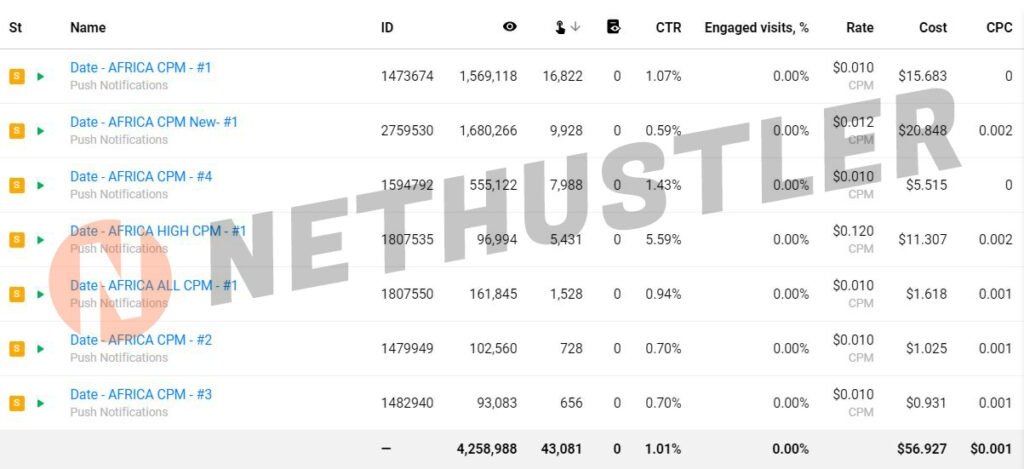
This screenshot shows you some CPM ad campaigns that I have used for my dating CPA case study, inside the Propeller Ads network.
Now as you can see, on some of these CPM campaigns I was bidding $0.01 for 1,000 impressions. (Which is insanely cheap paid traffic by the way)
With an average CTR of 1%, that means my CPC was $0.001 or even lower!!!
If I were to create a CPC campaign on the same ad network, the minimum CPC bid would be $0.005, so by creating a CPM ad with a high enough CTR I was able to get a cost 5 times lower than the minimum CPC bid. ($.001 instead of $.005)
Crazy huh?
But, it can easily backfire, especially if you bid a lot and you get a low CTR (click-through rate).
So yeah test small first, if you don’t want your ad budget to disappear in minutes.
You can use this PPC calculator to figure out your CPC costs for CPM ads depending on CTR rates.
vCPM – Viewable Cost Per Mille
Hold up’ vCPM? This sounds exactly the same as CPM. Well it’s not. Otherwise there wouldn’t be another crazy term for this ad pricing model now would it?
vCPM simply means viewable Cost Per Mille. This ad pricing model is similar to CPM yes, but with the difference being that these ads are actually guaranteed to be seen by users.
You see many publisher sites just throw some CPM banners on their site, in the header (top of the site), in the sidebar, or in the footer (bottom of the site).
And every time the ads are being loaded on a page, all the ads count it as an impression and you will be billed for that, REGARDLESS if a user has actually seen the ad or not.
Because remember, sometimes those ads might be way low into the footer (the end) of the website, and the user is just reading the title and then he bounces.
That still counts as an impression (since the ad has been loaded).
With the vCPM pricing model though, it guarantees you that your ads are actually being seen by users, so that you know you’re paying for actual real impressions.
CPV – Cost Per View
Also known as PPV (Pay Per View), this one of the pricing models that’s a bit less used by the ad networks. Nevertheless, CPV stands for Cost Per View.
Meaning that you will pay for EVERY single view on your ad. Usually, these are used on pop ad networks such as Popads.
So pay close attention and don’t confuse CPV with CPM, because you will quickly lose a lot of money from your ad budget if you mix the two.
I know… because I fucked up once, I thought I was paying a $2 CPM rate for 1,000 impressions, and here I was paying $2 for EVERY.SINGLE.FUCKING.VIEW.
Almost $300 gone in minutes lol. Of course with 0 conversions 😉
CPA – Cost Per Action
Whenever someone does an action you either get paid for it (if you’re an affiliate marketer) or you get to pay for it.
Since this article is more focused on advertisers, CPA, which stands for cost per action (or acquisition), simply means the amount of money you had to spend on advertisments before someone converted on one of your offers.
How is CPA calculated
The CPA formula is this: Total Ad Spent / Conversions = CPA
For example, if you spent $300 on ads, and you got 23 conversions out of it, your CPA is 300/23 which is 13.04
Knowing your CPA is very important if you’re an advertiser and looking to maximize and scale up your ad expenditure.
There are ad networks that allow you to specify a CPA price, and the ad network will strive to bring you a client without spending more than your specified CPA.
By taking the example from above, if you know that your CPA is $13, you could:
- A. Set up a CPA campaign with $13 as maximum (to break even)
- B. Set up a CPA campaign with a price lower than $13 (to make a profit).
Of course these are examples, and it all depends on your ad network and offer, but it’s usually what you can expect when you’re bidding on a CPA pricing model.
If you’re interested to know more about CPA (from an affiliate marketing perspective), check out:
Next up:
CPL – Cost Per Lead
CPL stands for Cost Per Lead, it’s also part of CPA basically, but only limited to leads which can be anything from: email signups, to ZIP submits, and other type of forms.
The difference is that CPA also include sales transactions, while CPL only account for leads generated.
CPS – Cost Per Sale
This performance marketing pricing model can also be included in the broader CPA term, but it can also stand on its own.
CPS means cost per sale, if you’re an advertiser that has affiliates, this is the amount that you will pay them every time they bring a sale to your product.
If you’re an affiliate, the CPS (cost per sale) is simply the commission that you will get paid when someone buys a product through your affiliate link.
CPI – Cost Per Install
If you’re looking to get install to your app, the CPI is also similar to CPA (the formula for CPI is the same). Meaning that you can calculate your CPI if you substract the ad cost from your conversions (or installs in this case).
When you know your CPI, you can set that up in ad networks so that you never have to pay higher than your CPI rate for new app installs.
If you’re doing affiliate marketing, promoting app install offers, the CPI is the rate you’re going to get paid every time someone installs an app through your affiliate link.
CPE – Cost Per Engagement
The CPE stands for Cost Per Engagement. It’s one of the newer marketing pricing models, where advertisers pay only for the ads that users have interacted with.
For example, on certain ad networks, advertisers don’t have to pay anything if their ads are only seen by users.
But if the users interact with the ad in any way, meaning they hover with the mouse over, or the ad expands into a bigger one, then and only then will the advertiser get charged for the ad view.
It’s a pretty sleek ad pricing model, that many advertisers really use, and honestly, I don’t know why, as it seems to be a much better deal than simply doing CPM.
Anyway… moving on:
RevShare– Revenue Share
As an advertiser RevShare is the amount of revenue (duh) that you’re willing to share with a publisher or affiliate for them to successfully bring a sale to you.
For example, if you are selling a $30 product, and offering a 50% revshare to affiliates that are promoting your product, you will have to pay them $15 every time they get a sale.
Pretty sweet huh?
There aren’t that many ad networks that offer this feature though, so if you’re looking to get affiliates promoting your products you should check out:
Best affiliate networks that you can join as an advertiser and find quality partners.
More Advertising Metrics
You thought I was finished?
Haha, nope.
Here are more boring (but equally important) basic marketing terms that you need to know, as an advertiser and online marketer in general.
Especially if you’re launching paid ad campaigns, you need to make sure that you track a few key performance indicators (KPIs).
Such as:
ROI – Return On Investment
Your advertising pricing models can be whatever: CPC, CPM, CPI, CPA, etc.
What matters is, which one brings you the best ROI? (Return on investment)?
You’ve probably heard about ROI a lot on the internet, so what the heck is it?
It’s a way for any type of investor, to calculate if they are making money or if they are losing money.
Simple as that. If you’re paying for ads, in a way you’re investing money, so using ROI, you can accurately see if they are profitable or not.
ROI Calculator Formula
There is a simple formula that you can use to calculate your return on investment, which is this: ROI = Net Profit / Cost * 100.
For example, let’s say that you’ve spent $150 on paid advertising, and you’ve got a total net profit of $476 (after deducting product and other costs), to calculate your ROI you will do: 476 / 150 = 3.173 * 100 = 317. So your ROI is 317 % which is great because it’s positive.
A positive ROI (over 0 %) is good, however, a negative ROI (under 0%) is bad, as it means you’ve lost money.
You can calculate your ROI whenever you want to check out an advertising channel performance or campaign KPI.
ROAS – Return on Ad Spent
Wait, isn’t ROAS the same as ROI? In a way it kinda is, but ROI can be used overall to calculate the profitability across all campaigns, whereas ROAS can be used specifically for individual campaigns and ads, to see which one are profitable and which ones aren’t.
Because when you launch a campaign promoting something, usually you’re going to have multiple ads that are all sending paid traffic to the same product/service.
Some of those campaigns might not all be profitable, and in fact lose you a ton of money, so it’s good to calculate the ROAS (return on ad spent) for individual ads inside a campaign, to further optimize them and get higher profits.
Formula to calculate ROAS:
Here’s the simple formula that you can use to calculate your ads profitability: ROAS = Revenue / Ad spent
For example if you have multiple ads in a Facebook campaign you can calculate each Ad’s ROAS to see which of them are profitable or not.
Say that Facebook ad #1 spent $50 and brought you 4 sales totaling $250. The ROAS for that ad is 5 ($250 / $50) which is very good.
Now your 2nd Facebook ad spent again $100 but only brought you 1 sale of $62.5. The ROAS for this ad is 0.6 ($62.5 / $100), obviously, this is ad has a negative ROAS, and it means it should either be stopped or optimized to bring a positive ROAS.
CTR – Click-Through Rate
I’ve talked about CTR briefly above, but here we go again: CTR stands for click through rate. Meaning the amount of times users are clicking on your ads.
Formula to Calculate CTR:
To calculate your ad CTR, you will have to divide the number of clicks by the total number of impressions and then multiply by 100, like so: CTR = Clicks / Impressions * 100,
For example: 500 clicks / 20,000 impressions = 0.025 * 100 = 2.5% CTR.
You should always aim for a high CTR in any ad network, as it brings with it a lot of benefits, for example in Google Ads, a high CTR can boost your overall quality score and get you to spend less money on ads.
Read more: Google Ads Tips
You should aim to get at least 1% CTR on pretty much any type of ad in any advertising network out there, it doesn’t matter the type of your ads:
- Banner ad
- text ad
- Popup ad
- Push notification ad
- Native ad
Because the truth is, if you’re not getting over 1% chances are that you’re going to pay more money than other advertisers for the same keywords or targeting spots.
I sometimes like to chase CTR unicorns, meaning getting a CTR that’s higher than 10%, which is very difficult and incredibly rare, (hence the unicorn term).
CR – Conversion Rate
Sometimes also known as CVR, the CR abbreviation stands for Conversion Rate.
The conversion rate helps advertiser to calculate how much they should spend on ads, and if certain campaigns are profitable or not.
A conversion is a successful auction done by a user on your landing page, such as: Signed up for an email newsletter, bought a product, etc.
The conversion rate is also a key performance indicator that advertisers need to keep in mind, with a simple formula to calculate that is similar to the CTR one.
Formula to Calculate Your CR:
To calculate the conversion rate you simply divide the number of conversions by the number of clicks, and multiply by 100, like so: CR = Conversions / clicks * 100.
Example: You have bought 300 clicks, and out of those you have got 44 signups to your email newsletter (conversions), your conversion rate is: 44 / 300 * 100 = 14.6 %
Needless to say, digital marketers always strive for a high as possible conversion rate, that’s why they employ a lot of tactics such as funnels and remarketing.
Performance Marketing Pricing Models: Final words
Look, I’m sure that most of you didn’t even make it to the end of this article, and I can’t even be mad at you, I get it, some of this is hard to remember.
But, it’s very good to know some of these terms, especially if you’re doing paid marketing. You don’t want to blow through your ad budget and not knowing what the hell happened.
Or which pricing model is the best to get more conversions: CPM vs CPC vs CPA vs CPL vs CPI vs CPV…etc.
I mostly do CPC and CPM, but when the ad network allows to use a CPA pricing model then I’m also going to try that one out, once I know my CPA rate ofc.
Alright gang, until next time:
Stay Hustlin’
Stephen

